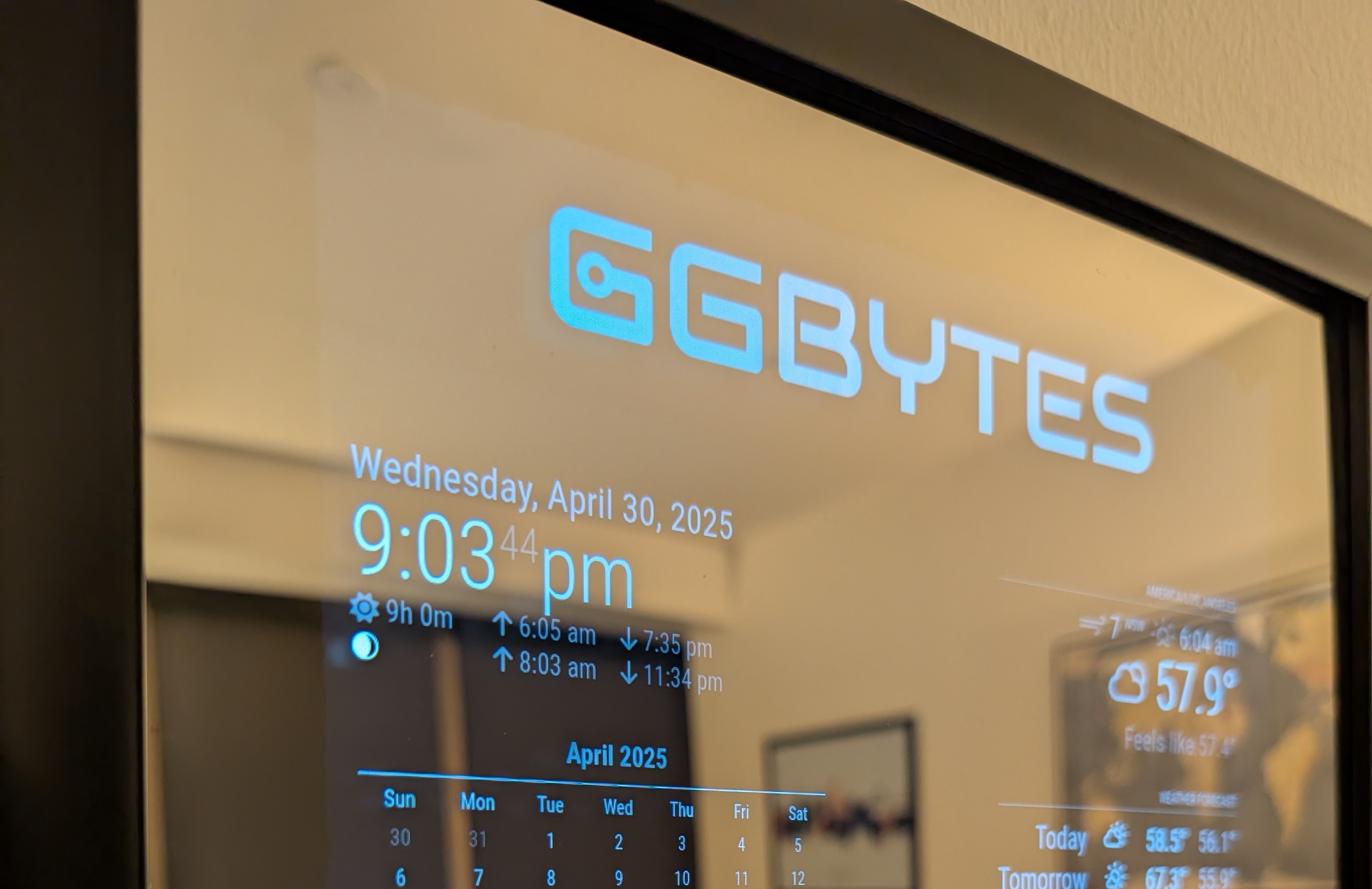Smart Mirror
-
Overview: The Smart Mirror is a functional mirror that overlays useful widgets like time, weather, and calendar notifications using a Raspberry Pi and a custom display frame.
-
Status: Completed
-
Objective: Build a smart mirror for daily-use information at a glance.
-
Technologies: Raspberry Pi, MagicMirror²
- Resources:
Updates
Improved Smart Mirror Build
July 19, 2025
I recently built a smart mirror using a Raspberry Pi 4 and a two-way mirror. The project is uses MagicMirror² software, which provides a customizable interface for displaying information like time, weather, news.
Components
MagicMirror² Modules
Core Modules
Third-Party Modules
Steps to Build
- Install MagicMirror²: Follow the installation guide to set up the software on your Raspberry Pi.
- Configure Modules: Customize the modules you want to display, such as weather, calendar, and news. You can find a list of available modules here.
- Set Up the Hardware: Assemble the two-way mirror with the monitor and frame. Ensure the monitor is positioned behind the mirror for optimal visibility.
- Connect the Raspberry Pi: Connect the Raspberry Pi to the monitor and power it on. Make sure it boots into the MagicMirror² interface.
- Final Adjustments: Adjust the settings in the
config.js file to customize the appearance and functionality of your smart mirror.
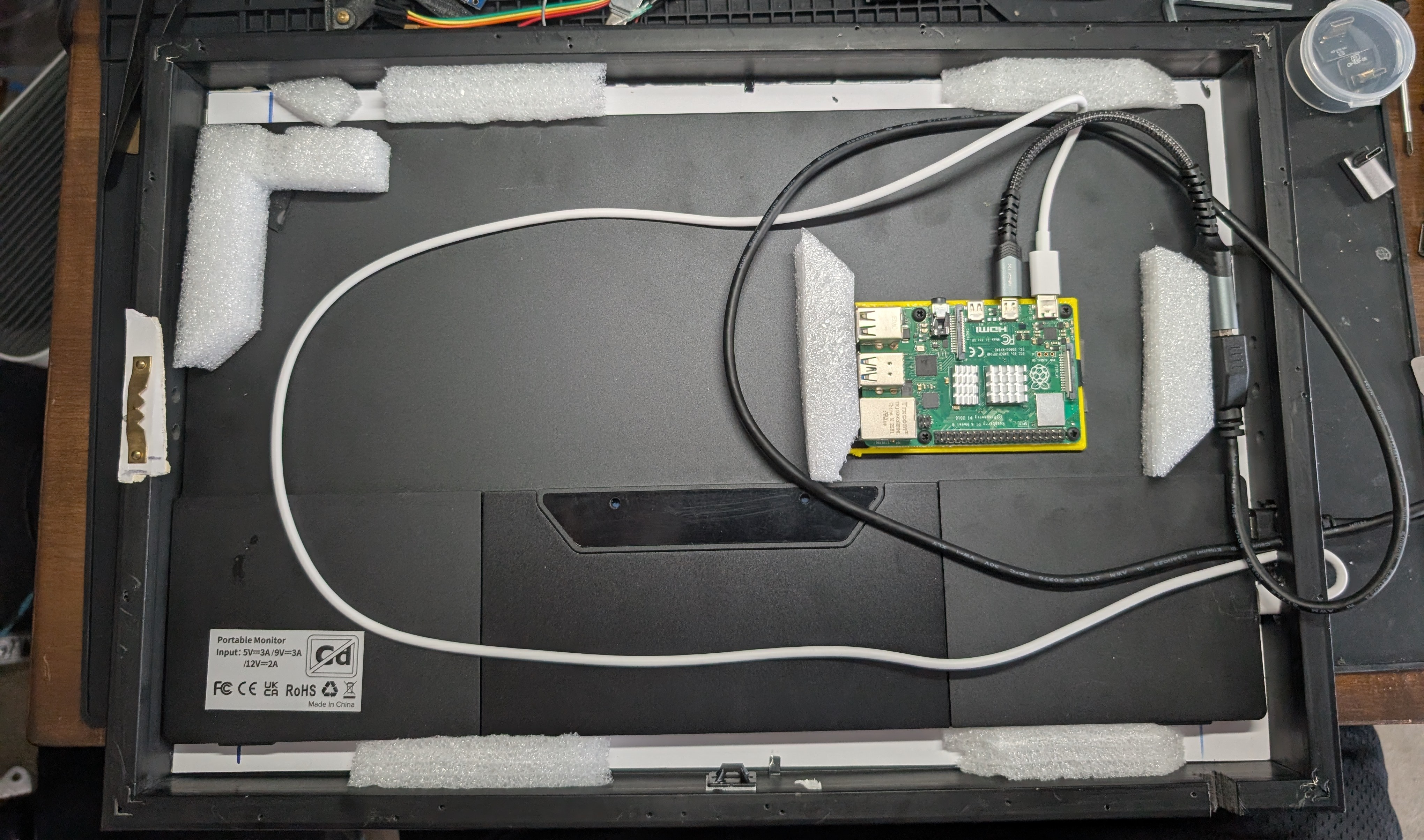
The insides
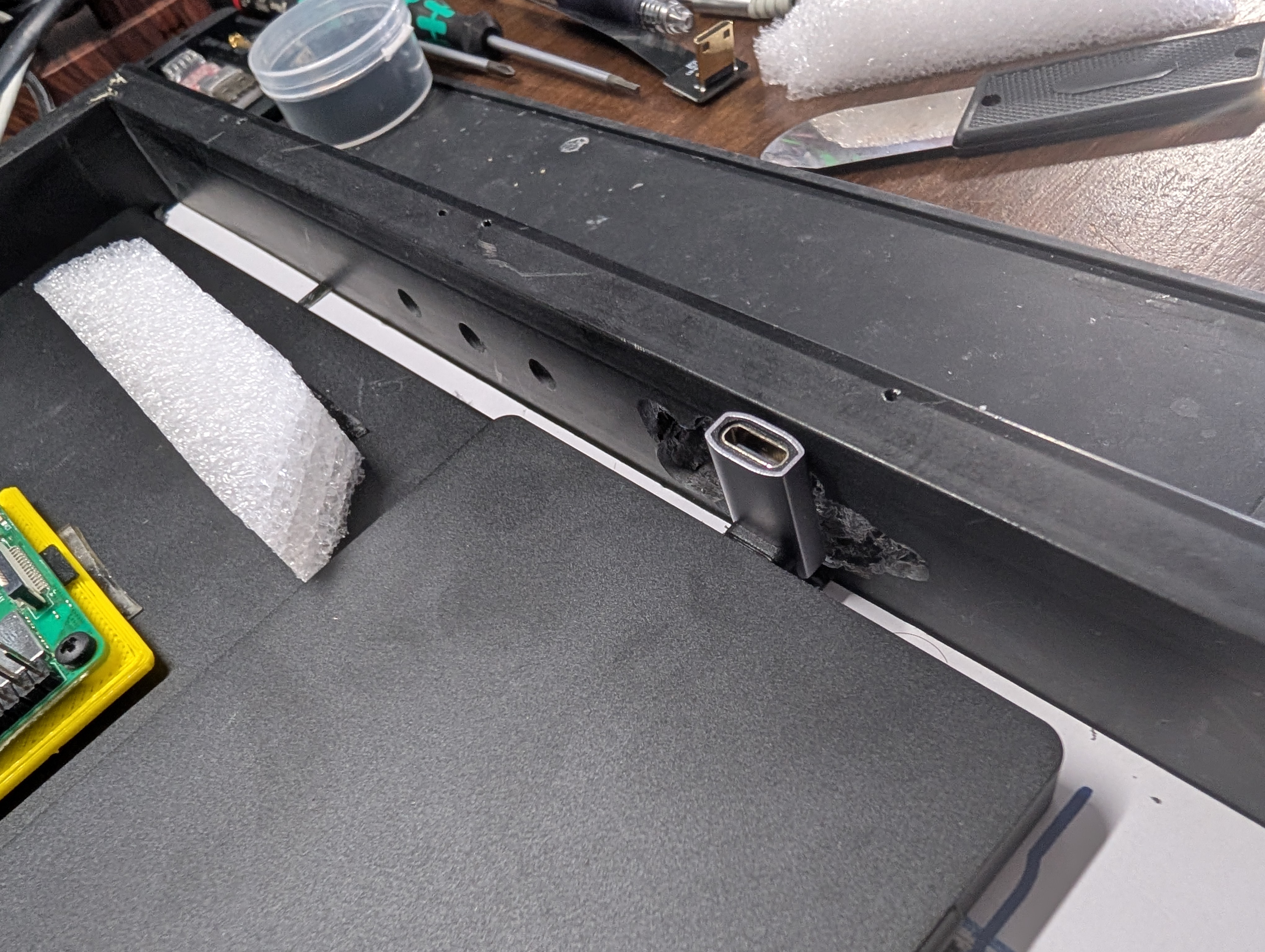
Soo... was hoping to use these right angle usb connectors to keep all the cables inside but that didn't go as planned.
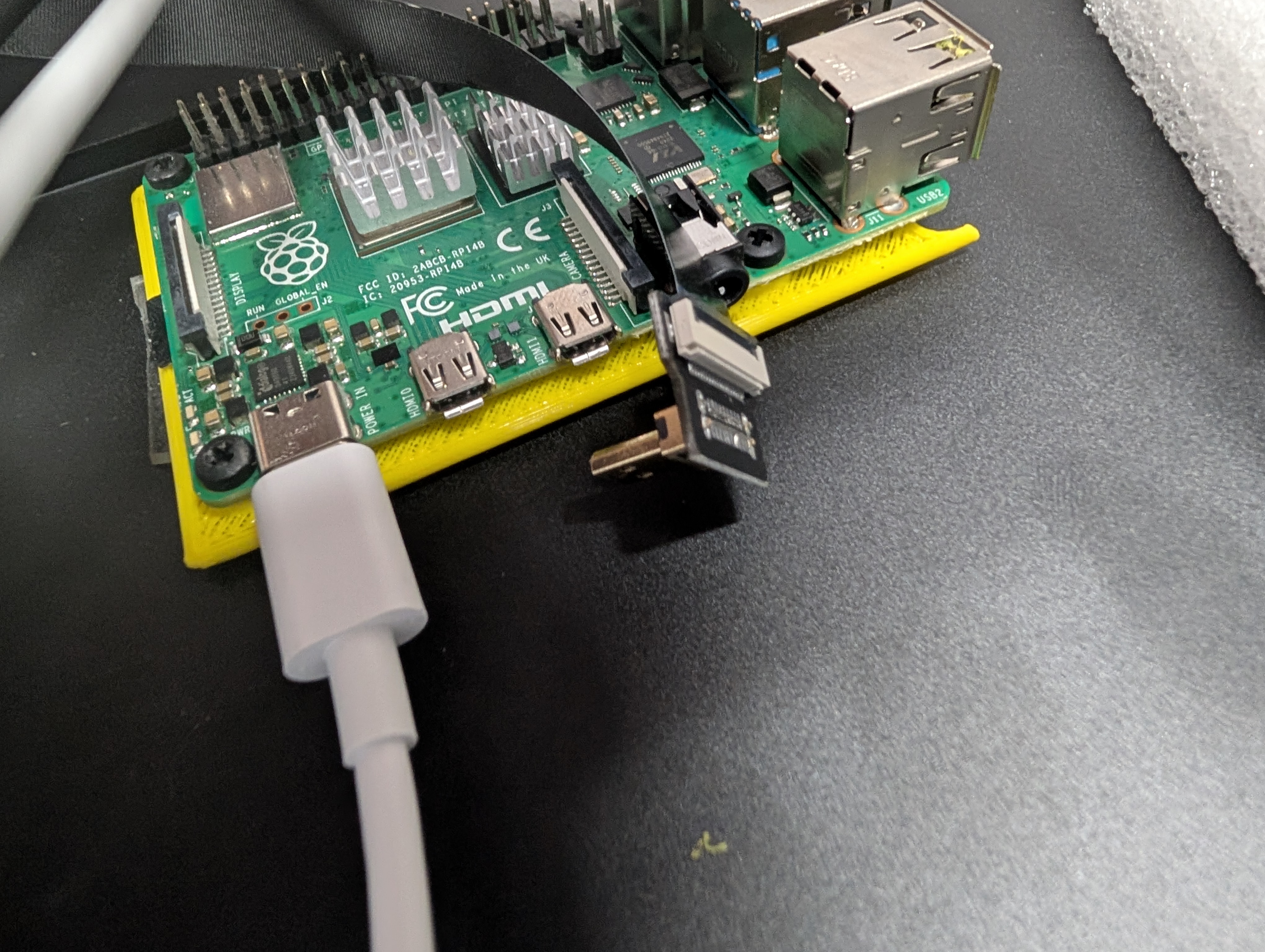
Did not realize the micro hdmi was in the opposite orientation as on the RPI4... whoops.

Mirror Border to fill the empty space and add support for the 2 way mirror.
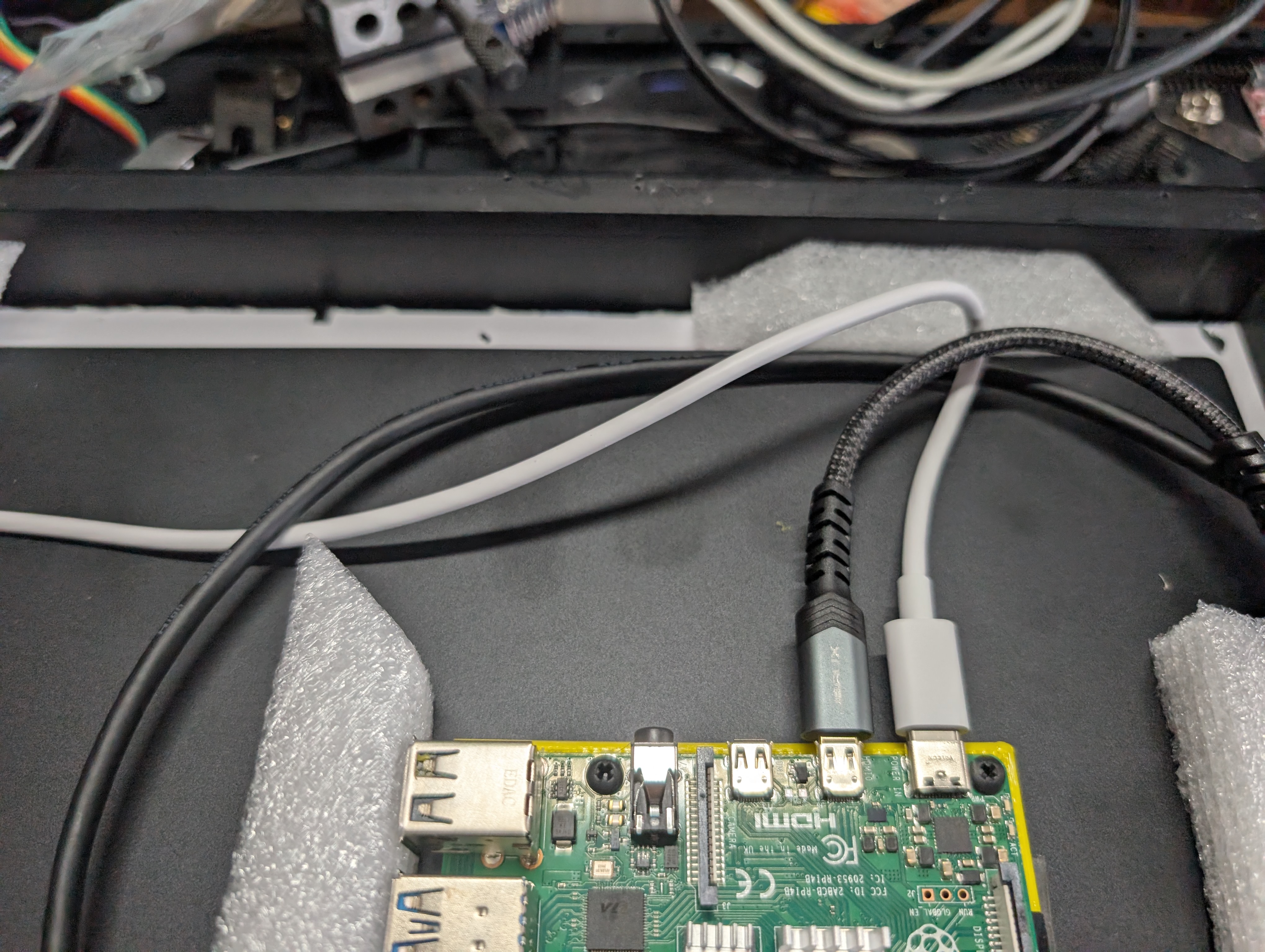
I put these white packing material around the monitor to help center it in the frame.
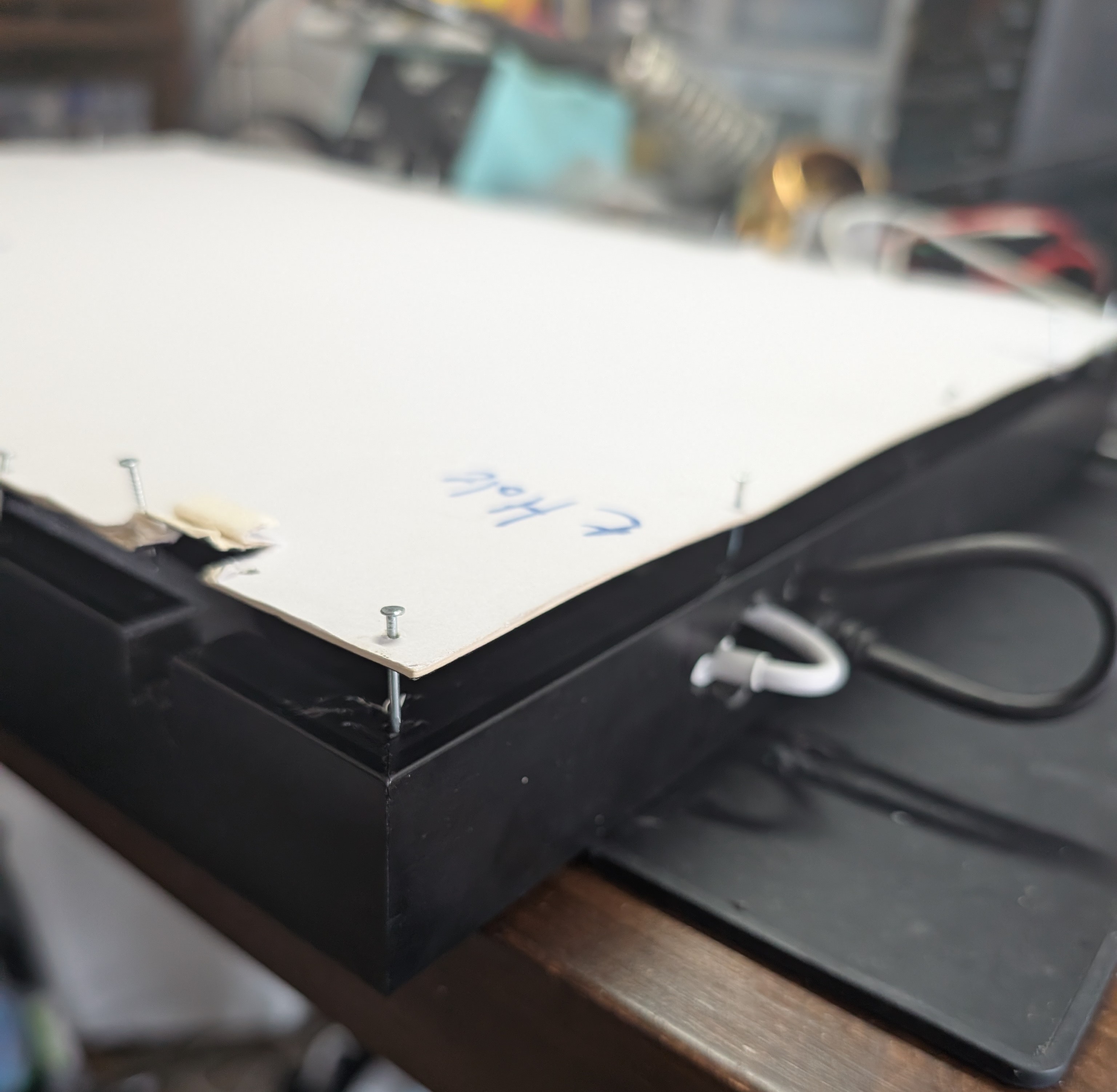
Sealing the whole thing up with nails. I wish I had a better way but oh well! It works ¯\_(ツ)_/¯

Still came out clean! :)
Key Takeaways
- This was a fun project that uses a Raspberry PI to create a functional smart mirror that I use daily.
- Using a modern Portable Monitor, I think is the way to go, since it’s already low-voltage and excellent viewing angle compared to older screens.
- Using actual glass would have been better, since the acrylic has a slight clown mirror effect, but that would have been much more expensive.
Back to Top
First Smart Mirror Build
July 17, 2025
I built my first smart mirror using a Raspberry Pi 3+ and an old monitor I have lying around a year ago. After the PI stopped working I opened it back up to figure out why it stopped working. In process of doing so I accidentally shorted the 110V circuit and the circuit breaker in my apartment tripped. So I basically fried the monitor and PI so opted to start over with a newer monitor.
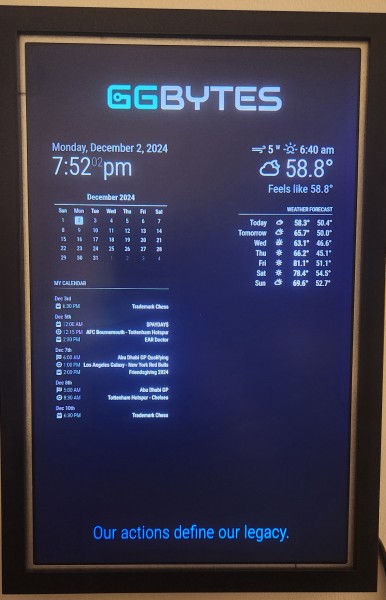
The original build using an old 720p monitor, which fit perfectly in the frame!
I’ll be posting the new monitor build soon, but wanted to share my original build for funsies. I do miss how the old monitor fit perfectly in the frame I had, but the viewing angle was terrible.
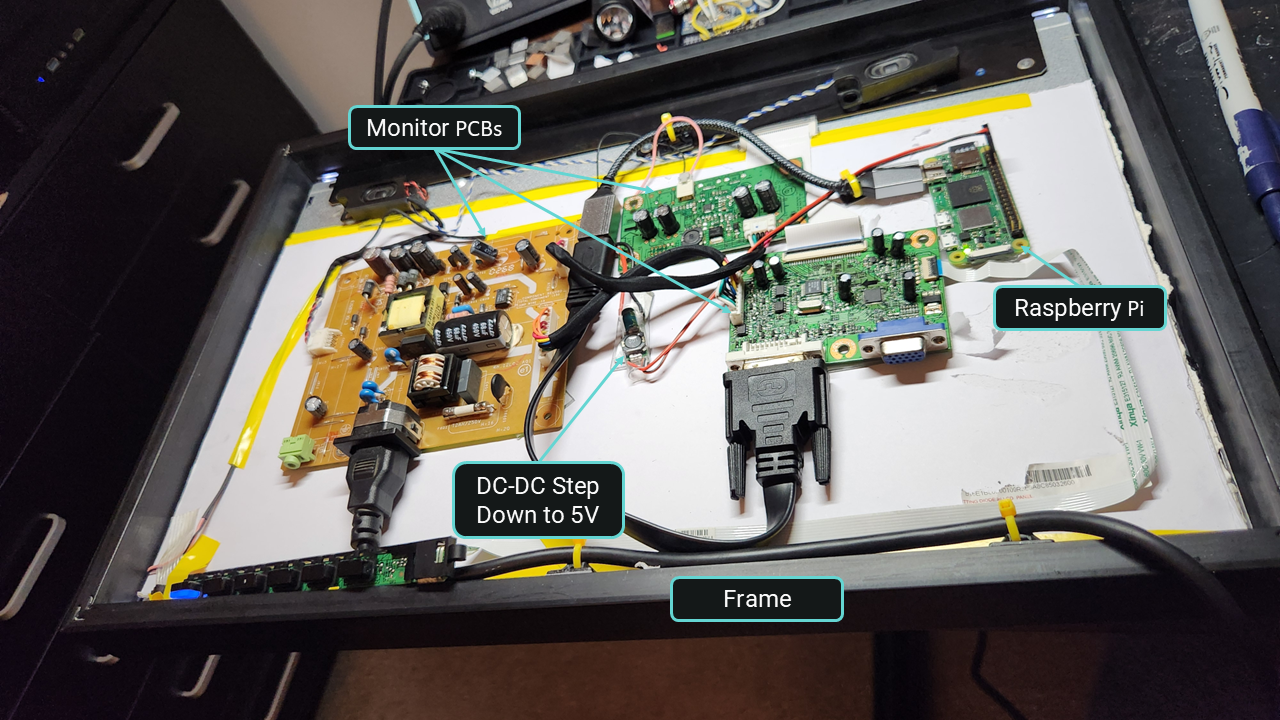
The 3 monitor PCBs are visible. I was able to find where the AC power gets convert to ~18VDC, where I soldered in the 5V DC-DC converter to power the pi. Also note a PI Zero is shown which DOES NOT WORK btw. From experience it's best to use a PI4 and above.
Components
MagicMirror² Modules
Core Modules
Third-Party Modules
Steps to Build
- Install MagicMirror²: Follow the installation guide to set up the software on your Raspberry Pi.
- Configure Modules: Customize the modules you want to display, such as weather, calendar, and news. You can find a list of available modules here.
- Set Up the Hardware: Assemble the two-way mirror with the monitor and frame. Ensure the monitor is positioned behind the mirror for optimal visibility.
- Connect the Raspberry Pi: Connect the Raspberry Pi to the monitor and power it on. Make sure it boots into the MagicMirror² interface.
- Final Adjustments: Adjust the settings in the
config.js file to customize the appearance and functionality of your smart mirror.
Key Takeaways
- This was a fun project that uses a Raspberry PI to create a functional smart mirror that I use daily.
- Using a modern Portable Monitor I think is the way to go, since it’s already low voltage and excellent viewing angle compared to older screens.
Want to thank the MagicMirror² community for their extensive documentation that made this project possible. If you’re interested in building your own smart mirror, I highly recommend checking out their resources and getting involved in the community.
I’ll be posting the new and improved build soon!!!
Back to Top

